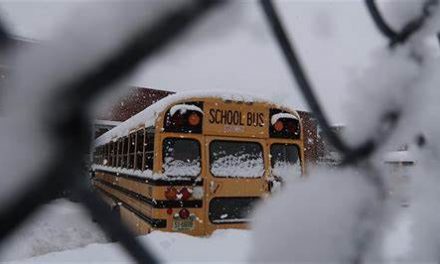COVID-19 has led to a rise in early and mail-in voting.
Experts predict higher voter turnout than in the 2016 election.
Here’s how the election works – and when we’ll know the outcome.
Nov. 3, 2020, is election day in the United States, and Americans across the country have already started casting their ballots to choose their next president and vice president, along with members of Congress, governors and local officials.
Here are some commonly asked questions about the election and what to expect.
How has COVID-19 affected the election?
Historically, the vast majority of the American electorate votes in three ways: in-person on election day, early in-person or absentee, also known as vote-by-mail. COVID-19 and the associated concerns and restrictions on large in-person gatherings have caused election officials across the country to shift priorities and resources to ensure Americans can safely cast their votes.
The biggest change for many voting Americans this year is the rise in absentee voting and vote-by-mail. Some version of mail-in voting had traditionally been available in every state prior to the pandemic, but the practice has been greatly expanded this year.
Nine states, plus the District of Columbia, have proactively sent ballots to all registered voters ahead of the election, while another 34 have instituted “no excuse” policies, allowing anyone to vote absentee. In total, The New York Times predicts 75% of registered American voters will be eligible to receive a ballot in the mail this year, with more than 87 million ballots sent thus far.
Additionally, voters worried about the safety of traditional election-day operations are turning up at early-voting locations in significant numbers. Forty-three states, plus D.C., offer some version of early voting, which allows individuals to cast their vote in-person before election day. Long lines around the country indicate a dramatic rise in early voting this year, as more and more Americans try to avoid the typical crowds of election day.
According to the US Election Project, more than 80 million early and absentee votes have been reported as of Oct. 30, easily surpassing the 58 million counted in all of 2016. These numbers are expected to continue to rise as voters take extra precautions to ensure their vote is safely counted.
How will this impact overall voter turnout?
Though these dramatic shifts in early and mail voting make it difficult to forecast overall election turnout, political experts are predicting higher numbers than 2016 and other recent elections. Popular polling and analysis website FiveThirtyEight, as well as the US Elections Project, predict turnout to be around 65% of the voting-eligible population, which would be the highest since 1908 and significantly higher than the 61.4% turnout from 2016.
Nearly 240 million Americans are currently of age and eligible to vote, so if predictions come true, more than 150 million votes will be cast this cycle.
How is the winner determined?
The US uses the Electoral College system for determining who becomes president. The framers of the US Constitution placed great importance on checks and balances on power, and the system helped preserve the rights of individual states while protecting an independent executive branch. To put it in context, the country had just won its independence from the British monarchy, and the framers had to design a new system for a new country whose people had never before elected a national leader.
Alexander Hamilton outlined the rational for the Electoral College in one of the Federalist Papers (no 68): It was thought to be a failsafe, an obstacle “opposed to cabal, intrigue and corruption.” Essentially, the system was created as a compromise between electing representatives by a popular vote and a vote in Congress, though of note, its popularity among Americans has waned in the past few decades.
WEF





